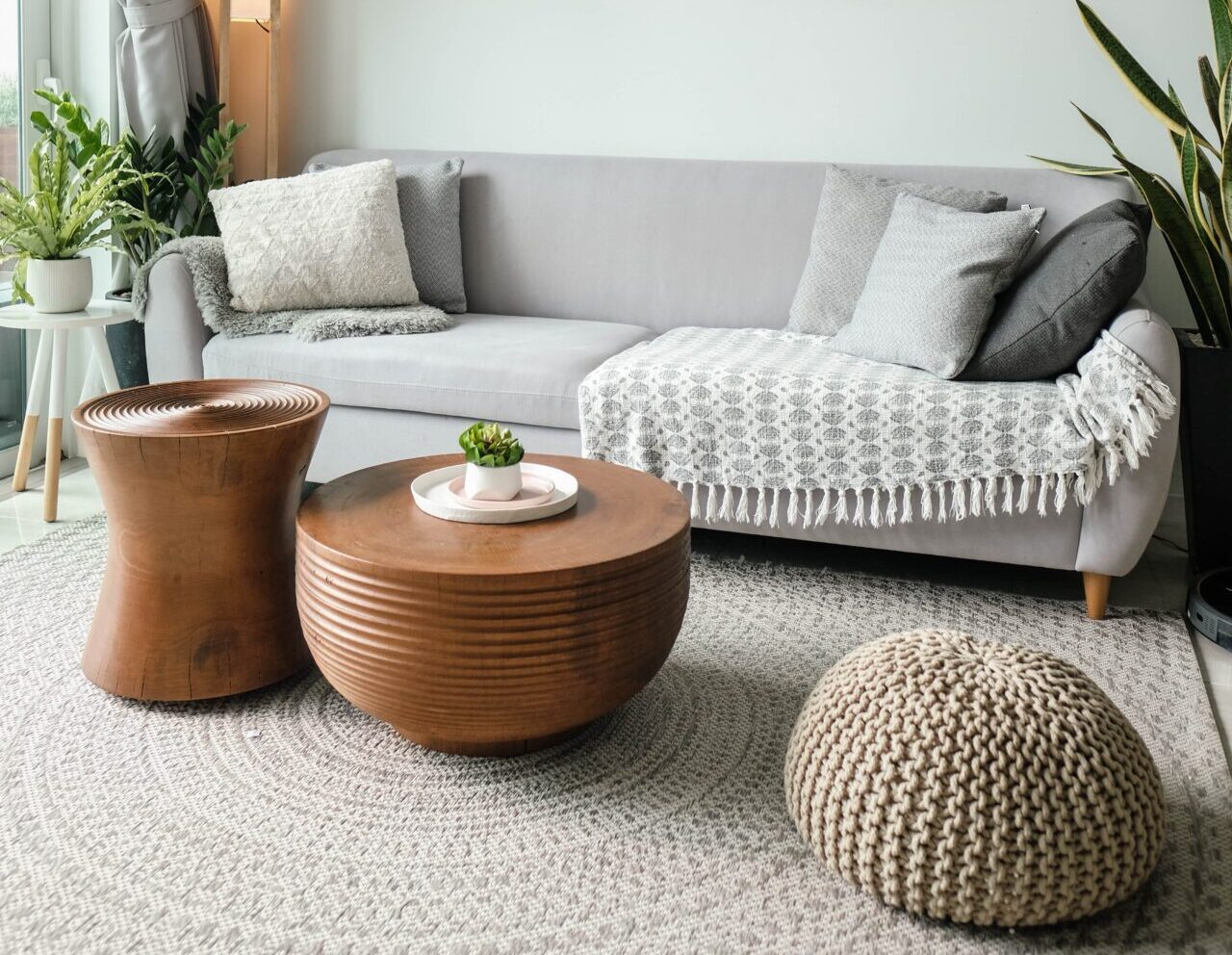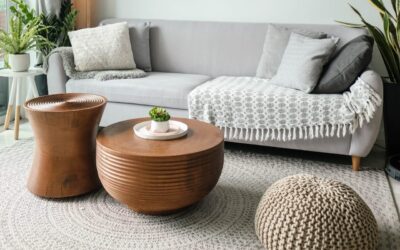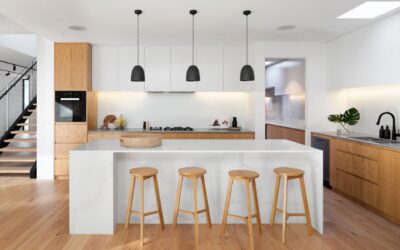If you’re interested in building a sustainable modern home, there are many factors you will need to take into account. Important considerations include the building’s orientation relative to the sun, the heating and cooling systems, and the appliances that you install. Just as important is evaluating the sustainability of the materials used to construct your home.
Often overlooked, your materials palette can have an outsized impact on the sustainability of your home. Selection of the right materials can not only help lower the carbon footprint of your project, it can also improve indoor air quality and lead to healthier living overall.
With this in mind, below we discuss some sustainable materials you and your architect can consider for the interior of your home. We also review a few examples of materials that should be avoided wherever possible.
WHAT MAKES A MATERIAL SUSTAINABLE?
It’s important to note that there are many different ways of measuring the sustainability of a building material. Some of the most important factors are:
- How much energy is required to produce the material
- Whether the material is reused or repurposed
- Whether the material can be recycled at the end of its life
- Whether the material is naturally-sourced and, if so, whether the source is replenishable
- Whether harsh chemicals were used in the production of the material
- How much water is required to manufacture the material
- How far the material must travel after manufacturing
Ridge Mountain uses no interior paints and features locally-sourced stone floors.
Ideally, you would consider all of these metrics to holistically evaluate the sustainability of a building material. However, considering the life-cycle carbon footprint of a material might be the most effective place to start.
Life-cycle carbon footprint encompasses many of the other factors listed above. For example, materials that 1) are composed of renewable resources (for example, wood and other bio-based materials), 2) are recycled, salvaged, or refurbished, 3) are locally sourced, or 4) are particularly durable will typically result in the lowest life-cycle carbon emissions.
As a general rule of thumb, it’s best to identify which materials make up the largest part of a building in terms of mass, and find the most sustainable alternatives for these first. For instance, it will likely be far more beneficial to ensure the building structure—which almost always makes up the largest share of a building’s embodied carbon emissions—is built in the most material-efficient way using the least carbon-intensive materials before worrying about decorative cladding for a small part of the home.
EXAMPLES OF SUSTAINABLE BUILDING MATERIALS
Below, we discuss the sustainability of specific materials, which is nuanced in many cases. Just because a material is sustainable in one context doesn’t mean it will be sustainable in all contexts. That being said, the materials below are a good illustration and starting point for many projects.
1. Bamboo
Bamboo is considered a sustainable building material because it’s both fast-growing and self-regenerating, allowing for shorter crop cycles without replanting after each harvest. It also affords structural advantages due to its elasticity and superior tensile strength.
However, it must be specially treated to reduce its susceptibility to insects and rot. Ideally, it should also come from a sustainably-managed forest and be sourced as locally as possible to minimize transportation emissions.
2. Cork
Cork is harvested from the outer layer of a tree that regenerates its bark in time for the next harvest, which makes it a renewable material. It is also known for its versatility. Because it’s hydrophobic, fire-retardant, and insulating (heat, cold, and sound), it can have multiple building applications—it can be used on walls, ceilings, and floors.
3. Wood
While wood sequesters CO2 from the atmosphere and stores it as mass, much of the carbon savings of using wood comes from using less concrete and steel, as these materials have a much higher carbon footprint than wood. In addition, interior application of wood can have significant benefits for mindfulness and wellbeing.
Ideally, wood should be sourced from sustainably-managed forests and energy-efficient manufacturers. The best way to prolong wood’s carbon sequestration and minimize its carbon footprint is to leverage reclaimed wood whenever possible.
4. Concrete
Concrete’s high thermal mass makes heating and cooling a building more efficient, but the material itself has a very large carbon footprint due to the manufacturing of its binder, portland cement. Replacing some cement with alternative cementitious materials (e.g. fly ash or slag) in the concrete mix, or opting to use emerging concrete technologies that sequester CO2 can help reduce embodied carbon in your project. Perhaps the most effective way to reduce concrete’s environmental impact, however, is to minimize the amount needed. In terms of building structure, this means consulting a structural engineer earlier in the design process to optimize the amount of concrete needed in the structural system.
5. Brick
As a building material, brick is long-lasting, can be salvaged and reused, and can provide an energy-efficient building envelope due to its high thermal mass. Being relatively inert, it doesn’t require additional toxic coatings either, which some cite as a benefit to indoor air quality. However, it’s important to consider the environmental impacts of mining finite raw materials for the production of new bricks, and the fossil fuels used to heat most brick kilns.
6. Glass
There are several trade-offs to consider for glass. It, of course, offers the physical and psychological benefits of ample daylighting and connection to the outdoors. However, when specified without care, glass can increase cooling loads in the summer due to solar heat gain, and heating loads in the winter due to heat transmission loss.
While glass performance has improved over the last few decades, architects must still take U-value, solar heat gain coefficients, and visible transmittance into account when specifying glass, to maximize both the energy-efficiency of the home and the thermal comfort of its residents.
NON-SUSTAINABLE MATERIALS
It can also be helpful to have a sense of some unsustainable materials so that you know which you should avoid for your project.
Generally speaking, materials on so-called “red lists”—those known to pose serious risk to the health and wellness of both building occupants and the broader ecosystem—should be avoided. Many lists have been developed by environmental agencies and architectural firms, using chemical hazard lists published by government agencies. The Living Building Challenge Red List is one example of a comprehensive red list that you can reference.
For instance, volatile organic compounds (VOCs) can off-gas toxic chemicals into the air we breathe, yet are commonly found in household adhesives, paints, coatings, and solvents. Exposure to such toxic chemicals can be minimized by opting for low- or no-VOC options.
MODERN SUSTAINABLE LIVING
Modern sustainable living should encompass all aspects of our lives, from the vehicles we drive, to the food we eat, to the work we do, to the homes we live in. If you are considering building a custom modern home, taking steps to ensure it is as sustainable as possible is one of the best actions you can take for your family and the planet.













